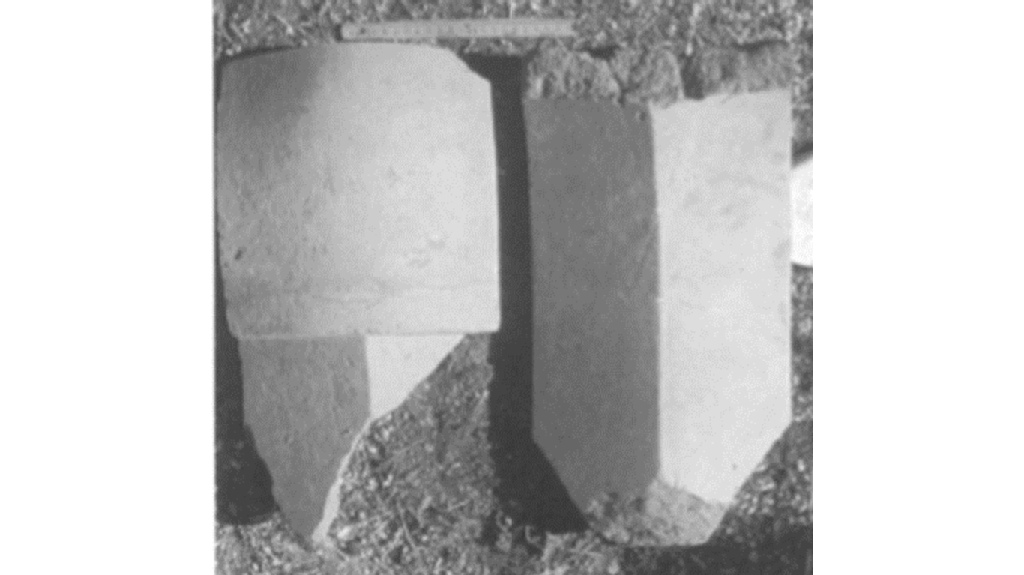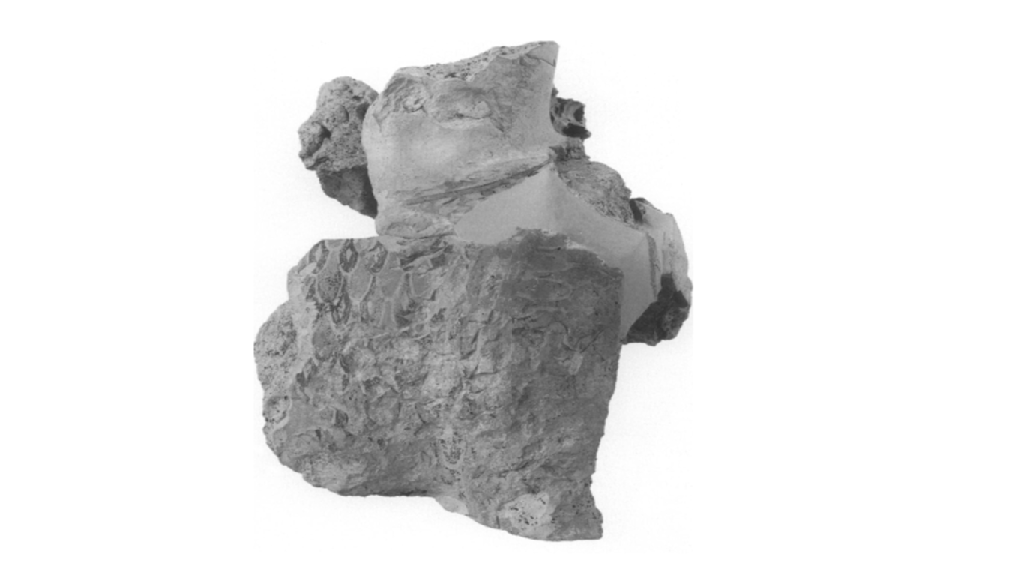Temple of Apollo, Corinth
The site from the ancient city of Corinth, which is now considered to belong to the Temple of Apollo, has a long history of being identified with different Greek divinities. Weinberg noted how, since the Renaissance, visitors to the site had wondered which god it had belonged to [1]. For example, in the 16th century Martin Kraus visited the site and speculated that the remains of the temple which stood there had belonged to Juno [2]. Additionally, other areas sacred to Apollo have been identified in and around the city, such as a shrine in the Asklepion and another temple situated outside the city walls [3].
Archaeological Development
In 1898 the site began to be cleared and this was finished in 1899.
Architecture
Originally another temple stood on the site which the Temple of Apollo was later built on. This, older, temple, had been built in the 7th century under the tyrant Kypselos. Although very little is known about this temple, Rhodes believed that it was an example of one of the earliest tiled roofs in Greece. He suggested that the 'combination tiles' which have been found at the site [7], indicate that the roof was 'equally sloped on all four sides' [8], as opposed to having two sides meet in the middle to form pediments at either end. The only other thing known about this temple is that it most likely had a small treasury within it. A story told by Herodotus about Periander mentions that 'if anyone gave [his son] shelter, or even spoke to him, should be fined a certain sum, the money to be dedicated to the service of Apollo' [9]. Clearly, somewhere within Corinth there was a place in which fines paid to Apollo were kept, and as Bookidis and Stroud infer, the most likely location for this would have been within the temple of the god [10].
The temple which stands on the site today originally had a total of 38 columns (although only 7 remain standing today). Each was over 7 metres high, with 6 columns at either end, and 15 along the lengths. The floor plan can be examined in Figure 3 [11]. It is of the Doris style, and its entire length equals 174 foot by 70 foot.
The curvature of the stylobate meant that the convex flooring of the temple allowed for the structure to appear more symmetrical than it actually was, and the Temple of Apollo at Corinth is probably the earliest example of this addition to temple building [12]; the Parthenon in Athens is another famous example of this innovation. However, whilst it is unknown when the temple was actually built, most scholarship tends to be place it somewhere in the mid-6th century [13]. Moreover, it is also clear that the temple which was built at this time was not architecturally identical to the one which stands today, with Bookidis noting how the roof had most likely undergone several remodellings [14].
It is evident by looking at the floor plan of the temple that it included two inner chambers - one larger, and one smaller. One theory is that, just as the original temple had contained a treasury, the smaller room carried out the same function [15]. This is particularly likely when considering Hollinshead's assertion that acting as a treasury was the primary function of most inner rooms within Greek temples [16].
Gods/Heroes
Another way in which this smaller room has been interpreted is for the worship of a second divinity [17], with Petra Reichert-Südbeck believing that the western chamber housed a cult of Artemis, the sister of Apollo [18]. However, I believe that it is more likely that only a single god was worshipped at this temple, and that the smaller room acted as a treasury.
Moreover, as has already been mentioned, the divinity to whom the temple belonged has long been debated. Many have identified it as the Temple of Apollo, due to the geographical description given by Pausanias, however there is very little evidence aside from this which identified the temple as such. Additionally, even if the temple did belong to Apollo, possible epithets remain a mystery, with Pausanias only mentioning a gold statue and no other details [19]. Thus, the cult practice which would have occurred there is completely unknown.
Archaeological Finds
Due to the lack of evidence found around Temple Hill, it is difficult to establish the kind of cult practice which would have occurred there. For this reason, I am going to consider the archaeological finds from the location and what this indicates about the temple. Moreover, as Powell indicated, it is difficult to assign all archaeological finds from the site to the Temple of Apollo [20].
Bookidis, in her article Corinthian Terracotta Sculptures and the Temple of Apollo discussed the significance of the fragmentary remains of 9-12 sphinxes uncovered from the site [21]. She concludes that the sphinxes were not votive offerings, but sculptures which would have been situated upon the temple roof. Additionally, she notes that the colours used to pain the sphinxes were those which were typical of Corinth, and had most likely been made locally [22]. However, if these sphinxes were votive offerings it would mean that the Temple either exclusively served the city of Corinth, or that workshops produced such sculptures around the temple in order so that they could be dedicated. This lack of major votive evidence is peculiar and so is unable to help with the identification of the temple, nor the type of cult practice which occurred there.
Additionally, Bookidis and Stroud have also noted the discovery of fragments of at least 11 decrees on Temple Hill, which indicated that in the Ancient World, the site was as politically important in the landscape of Corinth, as the Acropolis was in Athens [23].
Select Site Bibliography
Bookidis, N. (2000) 'Corinthian Terracotta Sculpture and the Temple of Apollo' in, Hesperia: The Journal of the American School of Classical Studies at Athens. Vol. 69 No. 4: 381-452.
Bookidis, N., Stroud, R. S. (2004) 'Apollo and the Archaic Temple in Corinth' in, Hesperia: The Journal of the American School of Classical Studies at Athens. Vol. 73 No. 3: 401-426.
Darling, J. K. (2004) Architecture of Greece (Greenwood).
Powell, B. (1905) 'The Temple of Apollo at Corinth' in, Hesperia: The Journal of the American School of Classical Studies at Athens. Vol. 9 No. 1: 44-65.
Rhodes, R. F. (2003)'The Earliest Greek Architecture in Corinth and the 7th Century Temple on the Hill' in, Corinth. Vol. 20: 85-94.
Weinberg, S. S. (1939) 'On the Date of the Temple of Apollo at Corinth' in Hesperia: The Journal of the American School of Classical Studies at Athens. Vol. 8 No. 2: 191-199.
Footnotes
1- Weinberg (1939) 191. Cf. Bookidis and Stroud (2004) 401.
2- Powell (1905) 48.
3. Bookidis and Stroud (2004) 414.
4- Cf. Darling (2004) 178.
5- Powell (1905) 54.
6- Pausanias, Description of Greece, 2.3.6.
7- Figure 2.
8- Rhodes (2003) 87.
9- Herodotus, Histories, 3.52.
10- Bookidis and Stroud (2004) 405.
11- Figure 3.
12- Darling (2004) 180.
13- Cf. Bookidis (2000) 386.
14- Bookidis (2000) 386.
15- Cf. Bookidis and Stroud (2004) 409.
16- Hollinshead (1999) 214.
17- Cf. Bookidis and Stroud (2004) 411; Darling (2004) 180.
18- Reichbert-Südbeck (1999) 2004.
19- Darling (2000) 178 identifies the temple as belonging to Apollo Pythias but neglects to justify this.
20- Powell (1905) 61.
21- Bookidis (2000). See Figure 4 for an example of the neck, chest, and left side of sphinx 7.
22- Bookidis (2000) 387.
23- Bookidis and Stroud (2004) 410.
Location
The location of the Temple of Apollo is upon Temple Hill, from which it could have been seen across Ancient Corinth [4]. It was built upon an outcropping of natural rock, which allowed for a sturdy platform on which the temple could then be built [5]. And if, as has been suggested, that the temple upon Temple Hill is actually the Temple of Apollo, as mentioned by Pausanias in his Description of Greece, then it was located ‘as you go along another road from the market-place, which leads to Sicyon, you can see [it] on the right…’ [6].
Figure 1

http://www.visit-ancient-greece.com/temple-of-apollo.html
Figure 2

Rhodes (2003) 87.
Figure 3

http://www.visit-ancient-greece.com/temple-of-apollo.html
Figure 4

Bookidis (2000) 413.
